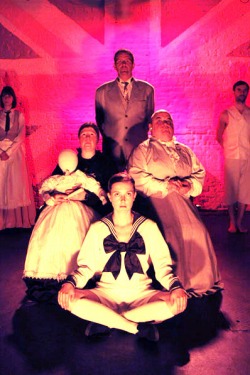Influence

Churchill found her ideas best displayed through represenation, in an unquenchable "longing to be" that focused more on a gender-specific desire rather than an ontological desire (Silverstein, 1994). Her feminist theatre approach furthers the concept of authentic symbolization. Through gender-bending, Churchill is able to deconstruct the role of "woman" and re-construct though the eyes of a heteronormative society. What comes into being, then, is the idea and representation, an unmediated presence of a woman (Silversten). What occurs for the audience is an illusion of not knowing who they see on stage, the character, person, or actor, a type of authentic symbolization (Silverstein). With having Clive's wife be played by a male, sexual difference is determined through the lens of masculine fantasy (Silverstein).
By using cross-dressing so well as a convention, transvestism became a dramatic device to show forms of social transgression (Herrmann, 1989). Two competing social forms, hetero-homosexuality find new debate in this historicized context. This opens the eyes of sexual subjectivity because from the beginning of the play to the end, the disguise of self suggests underneath there is a real, sexed self (Herrmann). It's this handling of the male language that helps re-ify the male heteronormative mindset.
By using cross-dressing so well as a convention, transvestism became a dramatic device to show forms of social transgression (Herrmann, 1989). Two competing social forms, hetero-homosexuality find new debate in this historicized context. This opens the eyes of sexual subjectivity because from the beginning of the play to the end, the disguise of self suggests underneath there is a real, sexed self (Herrmann). It's this handling of the male language that helps re-ify the male heteronormative mindset.
